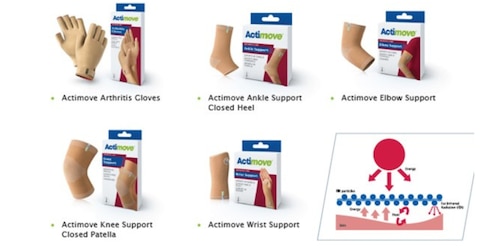Arthritis and incontinence are two separate medial conditions, but they can sometimes be connected or affect each other in certain situations.
Arthritis and Incontinence
Different forms of arthritis
Incontinence can occur in those with various forms of arthritis due to:
Limited mobility
Many forms of arthritis such as Rheumatoid and Osteoarthritis can cause joint pain and stiffness, making it difficult for individuals to reach the bathroom in time, or removing underwear and outer clothes, leading to episodes of incontinence. This is known as Functional Incontinence.
Arthritis pain can discourage physical activity, leading to weight gain. Excess weight can contribute to urinary incontinence by putting extra pressure on the bladder and pelvic floor muscles, making it harder to hold on.
Medication
Some medications used to manage arthritis symptoms, such as nonsteroidal anti-inflammatory drugs (NSAIDs), may increase the risk of developing incontinence or worsening existing symptoms.
Constipation
A reduction in activity due to arthritis can cause constipation, particularly if fluid intake is also reduced. Constipation is one of the main causes of incontinence. When the bowel is overfull it can press on the bladder and reduce the volume it can hold. This can lead to frequency and urge incontinence. Straining on the toilet due to constipation can stretch and weaken the pelvic floor, which can lead to Stress Incontinence.
Infections
In addition to the joint pain and stiffness associated with Rheumatoid Arthritis, infections and bladder pain are increasingly well-recognised complications. It is associated with a high incidence of UTIs, particularly in seniors. Studies have also shown that there is a link between Rheumatoid Arthritis and bladder pain syndrome/interstitial cystitis. This causes urinary urgency and frequency. It can also cause pelvic pain and Nocturnal Enuresis (involuntary urination at night).1
Reactive arthritis is joint pain and swelling triggered by an infection in another part of the body — most often the intestines, genitals or urinary tract. This condition usually targets the knees, ankles and feet. Inflammation also can affect the eyes, skin and the tube that carries urine out of the body (urethra). Reactive arthritis isn't common. For most people, signs and symptoms come and go, eventually disappearing within 12 months.2
Ankylosing spondylitis is a chronic inflammatory arthritis that primarily affects the spine and sacroiliac joints. Severe cases with advanced spinal involvement can potentially lead to bladder dysfunction, which may manifest as urinary retention or incontinence.
What can be done?
Reduce the risk of falls to improve independence
- Ensure furniture is not in the way of the path to the toilet (or commode)
- Place a clear sign on the toilet door (if memory an issue)
- Provide clothing free of buttons and zips – velcro works well
- Use a raised toilet seat to provide better stability
- Install handrails in the bathroom, provide urinal bottles or commode chairs
- Discuss the use of continence products. Pull up pants can promote independence and confidence and reduce anxiety, liners and pads can provide protection for smaller infrequent leaks
Extra assistance
Extra assistance might be needed for:
- getting to or on the toilet
- adjustment of clothing
- perineal hygiene
- placement/removal of pad/liner
Assistance will change from supervision to partial as the diseases progresses.
Tips and hints to improve bladder function
Don’t go ‘just in case’
Avoid going to the toilet before the urge to go is there or ‘just in case’ as it can lead to a reduction in bladder size and the volume it can hold, this then results in needing to void more often but smaller amounts.
Avoid reducing fluid intake, as this can cause the urine to concentrate irritating the bladder leading to it want to empty more often, which can then lead to frequency and urge incontinence.
Eat well
A healthy diet rich in dietary fibre will help avoid constipation. We need at least 30gm of fibre each day. Just adding fibre to a diet without increasing fluids can cause or make constipation worse. If constipation continues, see a doctor.
Drink well
Drink adequate fluids to quench thirst. Water is the best fluid as this can help stop bladder irritation and improve bowel function (which can affect bladder control). Consume about 1.5 -2 litres of fluid daily, limiting caffeine and fizzy drinks which can irritate the bladder.
Get moving
Aim to exercise for 30 minutes most days. Remember that walking is great exercise and can help keep those joints moving for longer.
Keep your pelvic floor muscles strong
Our pelvic floor muscles give us control over our bladder and bowel. Squeeze and draw up the pelvic floor muscles to control the urgency to go to the toilet. Think about something else rather than the urge. The urge should diminish or go away at this point so you can get to the toilet without rushing. Seek professional assistance in ensuring Pelvic floor exercises are done correctly. Visit TENA.com.au for more information.
Practice good toilet habits
Go to the toilet when your bladder feels full or when you get the urge to open your bowels. Do not get into the habit of going ‘just in case’. Take time to completely empty your bladder and bowel. To get into the correct sitting position on the toilet: sit on the toilet, elbows on knees, lean forward and support your feet on a footstool. To avoid kidney damage, if you think your bladder is not emptying completely talk to your doctor or diabetes nurse.
Try bladder retraining
When the urge to go is there try to hold on for 5 minutes before you go, try this at home initially, then try to hold for a little longer each time. If it helps, wear a pad to catch any leaks while using this technique.
Want to know more?
*Required fields
*Required fields
*Required fields











